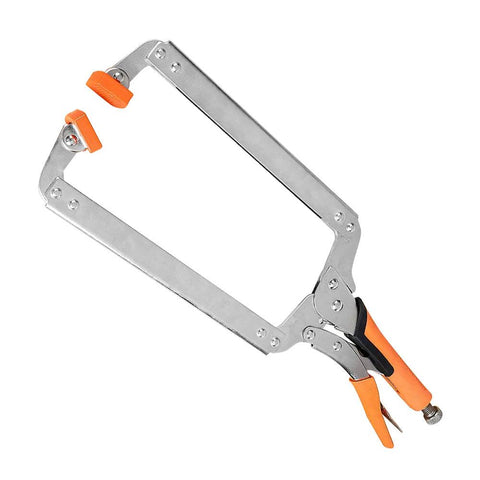Comparing C Clamp and F Clamp: Understanding the Differences
When it comes to woodworking or woodworking projects, having the right clamps is essential for securing materials in place and ensuring precise and accurate work. Two common types of clamps used in various applications are the C clamp and the F clamp. While both serve the purpose of holding materials together, they have distinct differences that make them suitable for specific tasks. In this article, we will explore the dissimilarities between the C clamp and the F clamp, shedding light on their unique features and applications.
C Clamp
The C clamp, as its name suggests, has a shape resembling the letter "C." It consists of a fixed jaw and a screw-operated movable jaw that can be adjusted to hold materials tightly. C clamps are typically made of cast iron or steel, offering durability and strength. Here are some of the key characteristics and applications of C clamps:
- Jaw Opening: C clamps have a limited jaw opening compared to F clamps. They are suitable for clamping smaller materials or objects with a narrow width.
- Throat Depth: The throat depth of a C clamp refers to the distance between the screw and the edge of the fixed jaw. C clamps generally have a shorter throat depth, making them suitable for applications where the clamping point is closer to the edge.
- Shape and Stability: The C-shaped design of the clamp provides stability and prevents the material from rotating or slipping during clamping. This makes C clamps ideal for holding objects in place during drilling, gluing, or other tasks that require stability.
- Versatility: C clamps are versatile and can be used in a wide range of applications, including woodworking, metalworking, welding, and general repairs. They are commonly employed in projects that require moderate clamping pressure.
F Clamp
The F clamp gets its name from its shape, which resembles the letter "F." It consists of a fixed jaw and a sliding jaw that moves along a bar or rail. F clamps are typically made of steel or aluminum, providing a balance of strength and lightness. Here are some notable features and applications of F clamps:
- Jaw Opening: F clamps have a wider jaw opening compared to C clamps, allowing them to accommodate larger materials or objects with a broader width. This makes them suitable for clamping tasks that involve thicker materials.
- Throat Depth: F clamps generally have a longer throat depth compared to C clamps. This feature allows the clamp to reach deeper into the material, making it useful for clamping objects that are farther from the edge.
- Sliding Mechanism: The sliding jaw of an F clamp moves along a bar or rail, providing flexibility and adjustability. This allows for faster and easier positioning of the clamp on the workpiece.
- High Clamping Force: F clamps are known for their high clamping force, making them suitable for applications that require a strong grip. They are commonly used in woodworking, cabinetry, metal fabrication, and other projects that demand heavy-duty clamping.
When to Use Each Clamp
The choice between a C clamp and an F clamp depends on the specific requirements of your project. Here are some general guidelines:
- Use C clamps for smaller materials, applications that require stability, and tasks that involve moderate clamping pressure.
- Use F clamps for larger materials, applications that require high clamping force, and tasks that involve thicker or deeper materials.
It's worth noting that both types of clamps have their variations, such as deep-throat C clamps or quick-release F clamps, which cater to specific needs and preferences.
In conclusion, understanding the differences between C clamps and F clamps is crucial for selecting the right tool for your woodworking or metalworking projects. While C clamps offer stability and versatility for smaller materials, F clamps provide greater jaw opening, clamping force, and flexibility. By considering the unique features and applications of each clamp, you can make informed decisions and ensure successful and efficient clamping in your work.

